Preamble
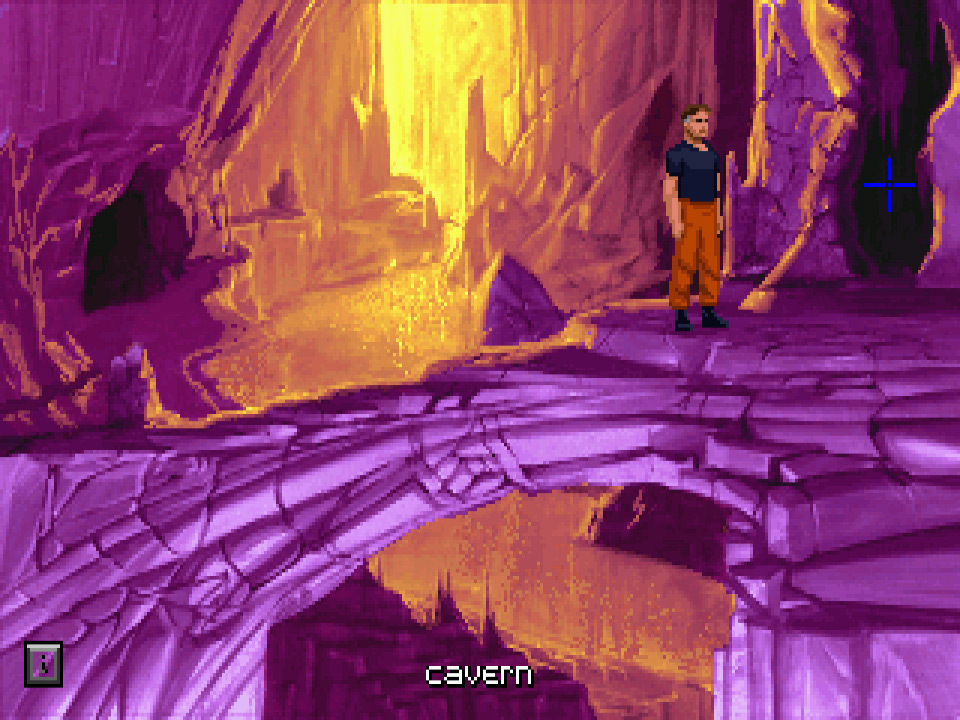
Hello everyone, and welcome to a new blog series I plan to do in-between my usual JRPG content on Giant Bomb. In 2021 I decided to play around with an assortment of "classic" adventure games, each with a reputation for having some butt-ass puzzles. This time around, I will be looking at The Dig, a 1995 release from LucasArts. Now, I can hear a handful of you typing away already that The Dig is not nearly as bad as some of the games I will likely look at throughout this series. And while I personally am not a fan of The Dig, and more on that later, I do commend the game for its ambition and otherwise outstanding visuals and music. Some of the screens you'll find in the game are major technical achievements and simply awe-inspiring. That said, none of this is to say the game is free from a handful of genuinely bunk-ass puzzles. And boy, are there some bad puzzles in The Dig.
That last sentence might be surprising to those of you that have only experienced the high points of LucasArts' "Golden Age" of adventure games. The studio maintained a reputation for creating sweeping adventures without the punishing difficulty associated with point-and-click adventure games. That said, there are a few LucasArts games that eschew their family-friendly and "all-ages welcomed" reputation. The three titles that come to my mind are Loom, Full Throttle, and The Dig. With The Dig, the game bites off way more than it can chew as its multiple attempts at environmental storytelling butt up against the Spartan-like simplicity of the SCUMM engine. As a result, The Dig has more than a few puzzles that subject its players to massive leaps of logic as well as fiddly time-based sequences that are anachronistic to what LucasArts built its reputation on at the time. With all of that in mind, let's get into the nitty-gritty with my rankings of every puzzle in the game.
As you will see, I'm using a continuum ranging from 1 to 10. Puzzles ranging from one to four are accessible sequences or set pieces that can be solved without guides or hints, regardless of your puzzle game expertise. Puzzles ranked between five and six are ones that only intermediate puzzle game players can solve, but beginners can solve in-game through clues, hints, or significant trial-and-error. From seven and above, we get into puzzles that most players cannot solve without consulting outside resources. Also in this category are puzzles that have major accessibility issues. For reference, one thing that will crop up in this entry is how several mechanics in The Dig are not at all accessible to those that are color blind. With that in mind, let's jump into it!
The Fun & Easy Shit - (In Chronological Order)
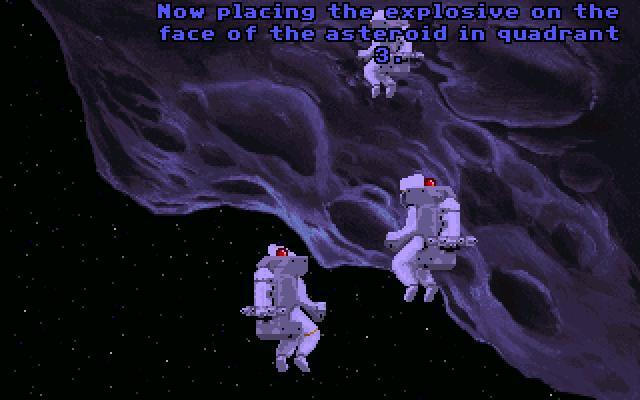
- Stopping the Asteroid - Score: 2/10 - A very forgiving introductory set piece and a puzzle where you can't enter a fail state. The one reason why I bump it up ever so slightly is that it is easy to forget to pick up the shovel as it almost perfectly blends into the background texture.
- Opening the Entrance Puzzle & Pedestal - Score: 1/10 - This puzzle is straightforward, and I enjoy the mystery the game builds up during this sequence. The puzzle pieces all have logical positions, and I had no UI or UX issues to report.
- Exploring the Canyon - Score: 3/10 - This is the game's first open-world environment and a real visual treat. It can be played out of order, but the game does not like that. Everything you see is abstract enough that it is not difficult to get lost and using the orb compass sucks. Likewise, the rod and chest, which are necessary items to progress the story, are easy to miss.
- Door Puzzles The Use The Gems - Score: 3/10 - The lack of door color coding is infuriating. Correspondingly, the Gem Wands are not fun to use. You can accidentally skip or go over your intended shape and color, and it sucks cycling back to the correct form. Additionally, the gem wands are not accessible for the color blind. The gem wands are far from "difficult," but they are tedious even after you grasp their gimmick. You use these devices way more often than I'd prefer, and they always feel fiddly.
- Light Bridges (All of Them) - Score: 2/10 - Here's another sequence that is not accessible for the color blind. The Light Bridge puzzles are easy once you "get" their gimmick like the Gem Wands. Nonetheless, fixing a Light Bridge is never not annoying, even if they all can reasonably be solved using logic and the information the game provides.
- Jumping the Chasm - Score: 1/10 - This sequence was a fun worldbuilding moment. Even if you get it wrong the first time, you will not die, and it is easy to figure out what you need to do.
- Fixing The Green Door - Score: 2/10 - There is a visual hint from the sparks on a pillar to indicate the terminal will not work. Using a nearby wire to jumpstart the panel makes sense. Using the tusk to open the panel's front board instead of the rod or shovel is less so. However, I appreciate how the game does not tack on an additional crystal puzzle like the earlier doors.
- The Panel in the Tomb Spire - Score: 3/10 - This panel is after the green door, but you need to use the red gem rod. In practice, this means the player needs to use trial and error to figure out which rod is correct. Much like every time you need to open a door, this is not hard or impossible; it's just time-consuming.
- Fixing The Last Light Bridge - Score: 2/10 - The game hints you need to open the panel to repair the bridge. Aligning the light beams is not complicated but provides another puzzle with accessibility issues. You still need to adjust the lens, which sucks, but I genuinely enjoyed this puzzle.

- The Planetarium Puzzle - Score: 2/10 - You need to use the two bong-looking objects to create a solar eclipse. It controls like shit, but the puzzle here is clever. The game's visual input is surprisingly coherent, and the accompanying cinematic is fantastic. This is by far my favorite moment in the entire game.
- Getting "The Eye" - Score: 3/10 - First, you need to go back to the alien inventor, and that is not at all clear to you as the player. Next, you need to collect a dropped rod that almost perfectly blends into the background. As was the case before, switching the gems to the correct symbols is annoying, and there's a ton of backtracking when you need to go to a different spire to pick up the Eye. Nonetheless, it is far from impossible.
- Getting Crystals From Brink - Score: 2/10 - The cutscene when Brink dies is very silly, but it's pretty clear where you need to go. Unfortunately, the game does not warn you to have the Eye in your inventory when you interact with Brink, which can cause the player to need to backtrack, but overall it's not that hard.
- The Final Guard - Score: 1/10 - You kill a monster by briefly turning off a light bridge. It's a simple and anti-climactic end puzzle.
The Convoluted And Frustrating Shit That Is Still Fun Or Redeeming - (In Chronological Order)

- Nexus Mirror Puzzle - Score: 5.5/10 - The terminal interface is atrocious, and the lack of a reference or unit of measurement is terrible. The inclusion of an action button is also very unintuitive. How you rank this puzzle depends on how you feel about games with programmable movement. I usually enjoy programmable movement, but the lack of a grid or circuit to indicate where you can move your automaton frustrated me. Also, a level of pixel-perfect accuracy is required for this sequence which makes it way harder than it needs to be.
- Saving Maggie - Score: 4/10 - This was some sexist bullshit and very silly. This set piece is comedic when the game has not been overtly eliciting laughs thus far. I appreciate the game automatically moving characters in the right direction at various points. Forcing Brink to help you is a clever and funny bit. That said, you sure do need to jump between multiple screens way more than you feel like you should.
- Getting the 4th Metal Tablet - Score: 5/10 - I have a real hard time ranking "pixels hunts." In this case, the entrance to the beach can be hard to find. Worse, knowing to use the tablet with Maggie to unlock an island from another dimension is a MASSIVE leap of logic. This requires the player to explore the entire game looking for some glowing shit flickering in a specific background and knowing when to combine an item with Maggie. None of this is challenging per se, but it's still a convoluted pixel hunt.
THE FUCKING AWFUL SHIT THAT MAKES ME WANT TO EAT OUT MY EYEBALLS! - (In Order Of Pure Pain)
Bringing The German Dude Back To Life - Score: 7/10

I debated if I wanted to put this in the "FUCKING AWFUL" category or not. One reason against doing so is that some enjoy this sequence as it forces the player to explore the game's world for the first time. Likewise, a lot of people appreciate the mythology surrounding The Dig, even if the game doesn't entirely pull its many pieces together. That said, I'm not too fond of this set piece. The foremost issue for me is that this is the first puzzle that forces you to navigate between several different environments, and navigating the world of The Dig sucks. Whether using the tram or the Light Bridges, every path or shortcut is at least three to four screens long. And some of your exit ways or transitions are not entirely clear, which is not usually a problem with LucasArts' works. That last problem is especially the case when you're trying to find the door to the life crystals.
The actual process of reviving the dead German Scientist is entirely illogical. The cinematics the game forces you to watch all make very little sense. And for those of you who don't know what I am talking about, you need to examine a series of animated wall paintings and discern that green orbs can revive the recently deceased. With one of your companions having fallen to their death, the game wants you to use alien goo to bring them back to life. The problem is that the stone walls are monochromatic, and everything you look at is a blurry indecipherable mess. Likewise, the in-game world is already so large that knowing where the green crystals are in the first place is no easy task without a guide. The lack of an in-game map makes remembering specific tombs or rooms an uphill battle. More importantly, the concept of using goo to revive a dead person represents a "genre break." Up to this point, The Dig has been operating under a somewhat realistic veil of science-fiction, and this is the point when that suddenly stops.
The Nexus Crystal Puzzle - Score: 8/10

I HATED this puzzle when I first played The Dig as a child. Whether it is on an old CRT or modern LCD monitor, I always have had a hard time seeing if the glow on the tips of the crystals is getting brighter or not as I adjust them. As things stand, you need to alternate between three translucent crystals and illuminate them by adjusting all three at various heights. The source of frustration here comes when you accidentally change one crystal's position and undo your progress with another one. There's a specific order the game wants you to tackle the three crystals, but it at no point communicates what that order might be.
I absolutely HATE how you can fuck yourself over and turn off the other crystals and make things way harder for yourself. This puzzle is easy to solve once you figure out what you need to do, but even concluding you need to raise and lower the three smaller crystals simultaneously is not clear from the onset. Likewise, the tips of the crystals are a terrible source of input. Fun fact, this is one of those LucasArts puzzles that prevent you from looking up the answers on a guide. Whenever you start a new playthrough, the game randomizes the values for each of the crystals. This means that guides can only describe the strategy for the puzzle rather than represent a single solution.
The Tomb Puzzle - Score: 9/10
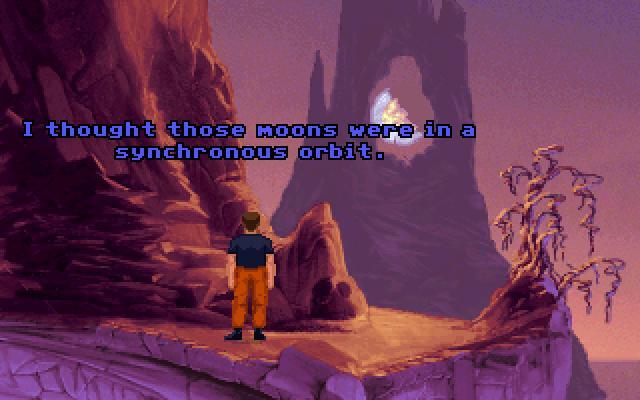
This might surprise some people, but I think the sequence in which you revive the alien architect is a moment worthy of condemnation. My reason for this is:
- You first need to find a specific screen with an eclipse in the background that you created from a prior puzzle. The Dig's navigation issues make this a downright painful process.
- Once you observe the eclipse, you need to place a blue crystal into a small slot, and this is an object you gathered during the first hour of the game.
- You need to stand on a blurry stone tile with two moons, which, to activate, you need to use the red rod from the rat puzzle to turn on.
- After you go down the elevator, you need to destroy a statue to find an entrance that has a guard. The guard, paradoxically, is killed using the green stones, which have not been used for a while.
- You use the first gem rod to open a door before you revive an alien in a tomb.
More than any other puzzle in the game, this sequence represents The Dig's overall design pitfalls. It attempts to provide elaborate environmental storytelling using the SCUMM engine and struggles to accomplish this. This process is way too involved for the verb–object interface employed by LucasArts. Similarly, the leaps of logic you have to make are uncharacteristic of LucasArts and instead pines for the works of Sierra. For example, on FOUR OCCASIONS, you need to pull out items that have been wasting away in your inventory since the first act. One of these objects, the blue orb, has not been used FOR HOURS!
Turtle Bone Puzzle - Score: 9/10
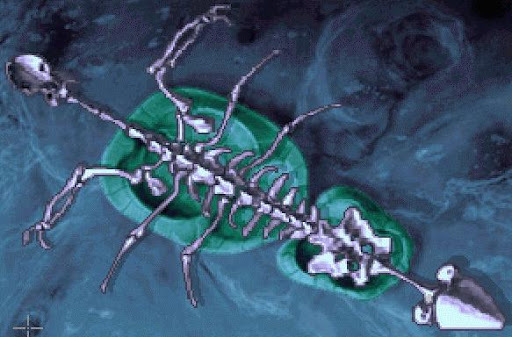
Many who play or have played The Dig consider this to be the most challenging puzzle in the game. I'm afraid I can't agree for a handful of reasons. First, the game provides a visual reference in the form of a fossil. This reference guide is far from perfect, but it is at least a partial attempt by the game to make your experience easier. Likewise, you are stuck interacting with a single pile of bones and don't need to bother with other nearby items or devices, which is not something I can say about what I consider to be the actual hardest puzzle in The Dig. Now, don't get me wrong, I think this puzzle is still complete horseshit. It's not exactly what I would call "a good time."
Right off the bat, the fossil reference is only partially helpful. The fossil you can examine is blurry and missing some critical parts compared to the pile of bones you need to piece together. Additionally, it is not clear what you have done wrong when you have completed the fossil and have an incorrect outcome. To add insult to injury, some of the bones look exactly the same. Finally, the pieces to the fossil are more than happy to snap into incorrect positions, and this can result in you having a completed skeleton that looks right but has a single piece out of alignment. In this situation, you are better off tearing apart your completed work and trying again from scratch rather than scouring for your one or two mistakes. To call this "frustrating" is a colossal understatement.
Trapping The Rat - Score: 10/10
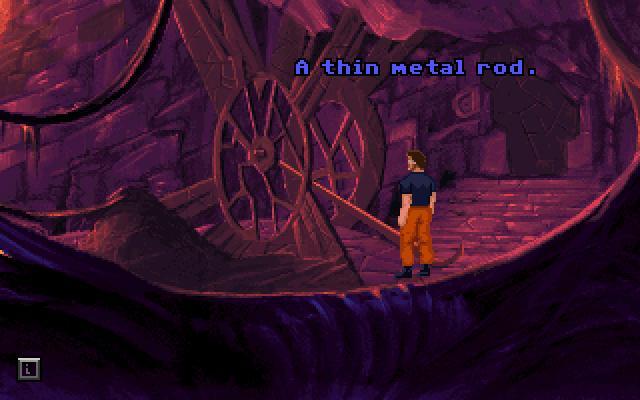
And now we reach The Dig's biggest puzzle-based turd. When people say they "like" The Dig, I cannot help but squint my eyes and point to this puzzle. On paper, your task seems simple enough. The panel to a door is missing an essential part thanks to an alien rat snatching it before you could stop it. Obviously, this means we need to chase after the rat and repair the door. Well... not so fast. What you are about to subject yourself to is widely considered one of the worst puzzles LucasArts designed during their "Golden Age" short of the Brick Wall Puzzle in the original release of Full Throttle. Even veterans of LucasArts games will back me up with that declaration.
Getting all of the parts needed for this puzzle is difficult because they all blend into the environment. The next issue is simply figuring out you need to create a trap to capture a rat in the first place. When I first played this game, I did not know the rat was the key to the puzzle and instead viewed it as a fun background animation. I thought it made more sense if you needed to dig directly into its nook. Assembling the trap is not intuitive, and trapping the rat requires a lot of trial and error as getting the rat in the proper position can take time. Identifying if your character is in the correct spot is a headache and knowing to use the bracelet on the rat makes no sense. Much like the Tomb Puzzle, the Rat Trap Puzzle requires you to use an assortment of items and objects you collected hours ago!
There's also an element of Broken Sword's notorious "Goat Puzzle" here as well. The only way you can get the critter in the trap is to get in position before its moving animation begins and finishes. This is a tiny window for you to fiddle with the SCUMM interface, and if you fail, you have to get the rat to pop out of its nook again. Using the blue compass device sucks because it is ambiguous enough to where you never really know where you need to use it or where it's pointing towards. Additionally, fixing the panel requires a specific part from a far-off environment you can miss. Finally, the red rod from the trap needs to be picked up after releasing the rat. Otherwise, you will not be able to complete a future puzzle.
Should You Play The Dig? (Answer: Maybe?)
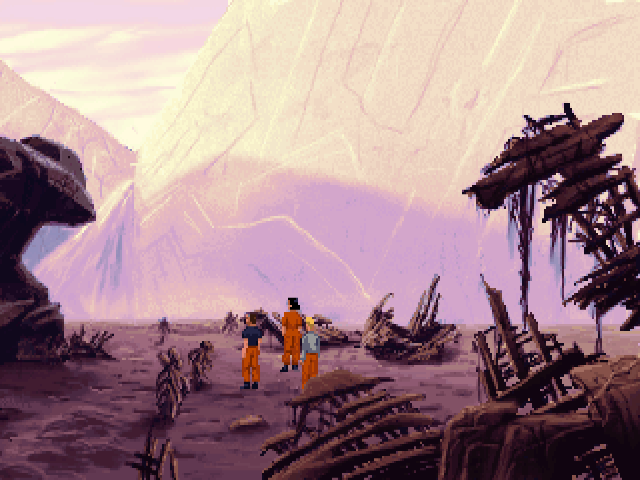
Even for intermediate to expert puzzle game fans, The Dig is a tough sell. While ambitious, the game struggles to pull together its many disparate and diverging ideas into a coherent adventure game. This issue makes sense when you consider the game is an adaptation of a long scrapped Steven Spielberg movie script. Despite the game having all the world's ambition, it doesn't do much when it comes to its narrative. The characters are largely the same as when you first encountered them, and the actual plot meanders for hours upon end. Worse, the story's climax reeks of a game that didn't know how to stick its landing.
Playing The Dig is equally befuddling. If you want to see LucasArts push their SCUMM engine to a breaking point, The Dig is worth a shot. That said, you should play it with a guide, as its punishing difficulty is an anachronistic break from many of LucasArts' previous classic adventure game titles. Some of the puzzles in the game are downright atrocious, requiring the use of long-forgotten items or specific inputs in a limited time frame. If this was any other developer, I might be convinced this is not a big deal. However, knowing this is a LucasArts project, I cannot help but feel like their attempts to try something different hurt the overall experience The Dig is attempting to offer.
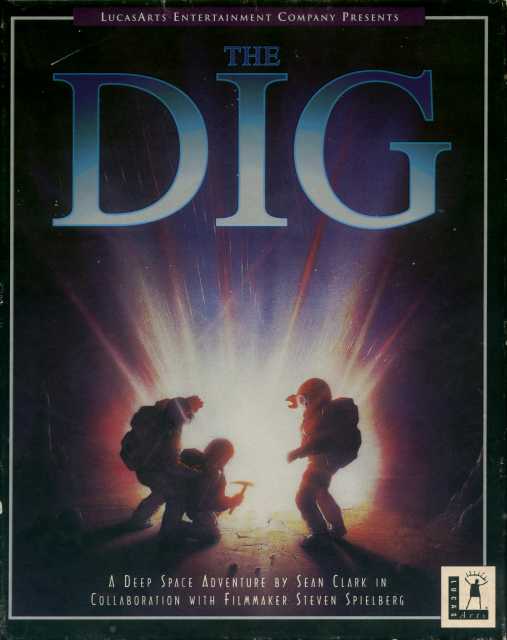
Log in to comment